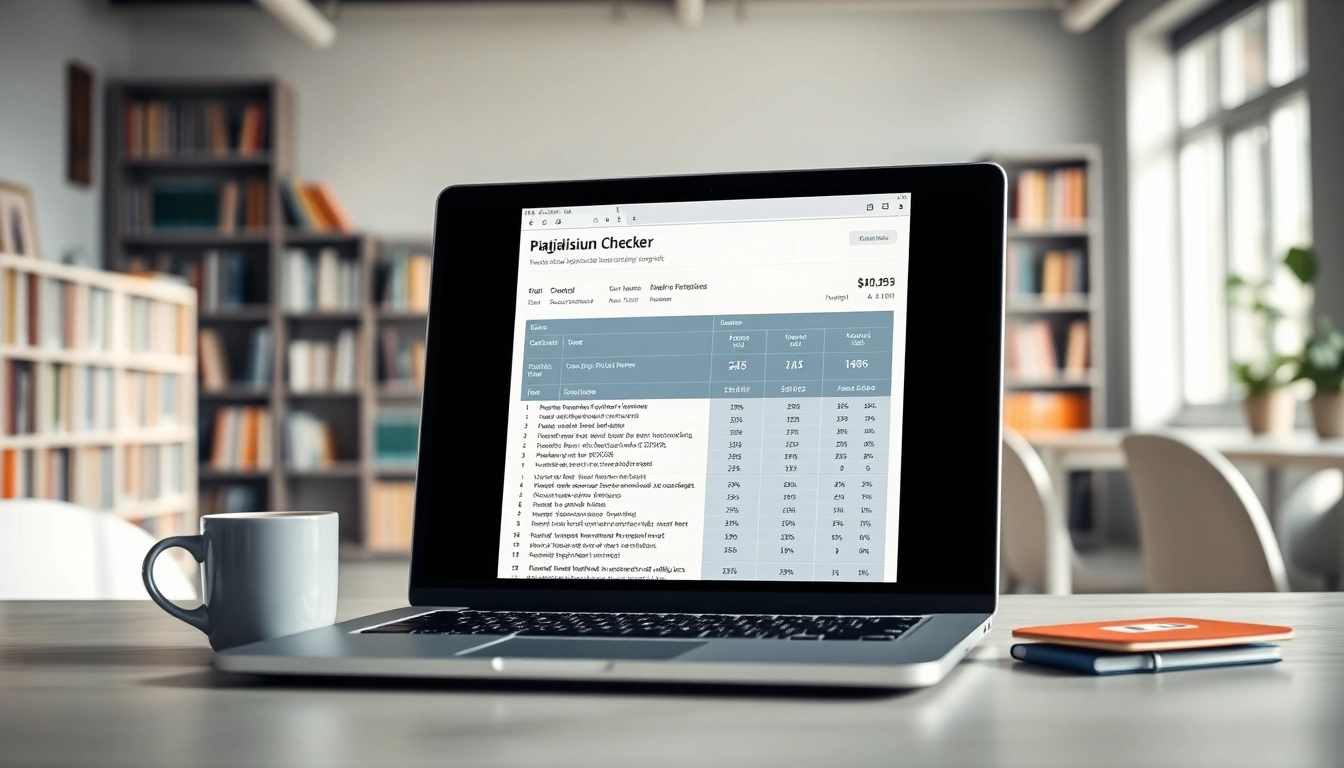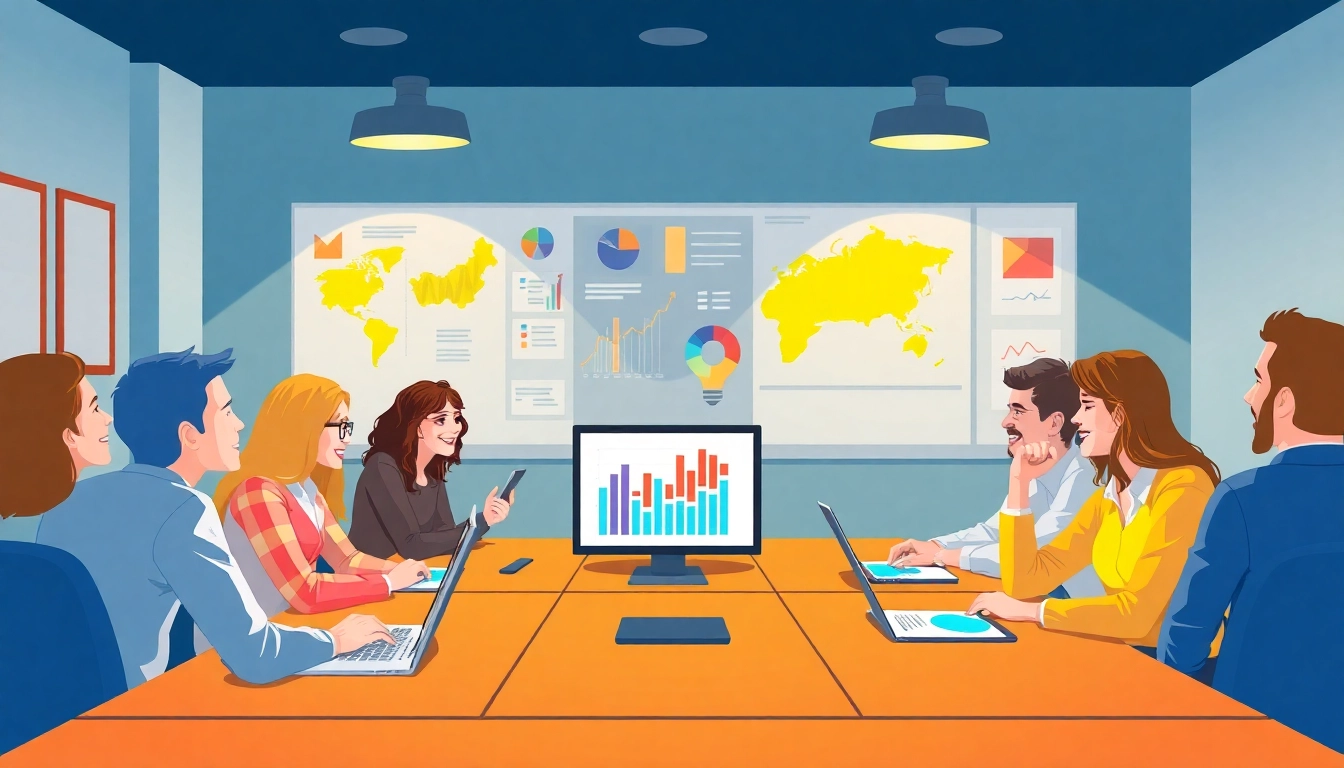Understanding the Importance of a Plagiarism Checker
In today’s digital landscape, where information is readily available and easily shared, the importance of originality cannot be overstated. Writers, students, and professionals alike must ensure that their work is unique and properly credited to avoid the consequences of plagiarism. This is where a plagiarism checker becomes an invaluable tool in both academic and professional contexts.
What is Plagiarism?
Plagiarism is defined as the act of using someone else’s work, ideas, or intellectual property without proper attribution, presenting it as one’s own. It can occur in various forms, from copying text verbatim to paraphrasing weakly without citation. In academic environments, plagiarism is a serious offense that can result in failing grades, expulsion, and a tarnished reputation. Beyond academics, plagiarism can have legal ramifications in the professional realm, as intellectual property laws seek to protect original content creation.
Why Use a Plagiarism Checker?
Considering the potential pitfalls of plagiarism, utilizing a plagiarism checker becomes crucial. These tools allow individuals to scan their documents against vast databases of existing works, identifying any phrases or ideas that may have been borrowed without citation. Notably, they help:
- Ensure Academic Integrity: Students and educators can maintain ethical standards by preventing incidents of unintentional plagiarism.
- Enhance Professional Credibility: For content creators, ensuring originality can bolster a brand’s reputation and integrity.
- Improve Writing Skills: Using a plagiarism checker can help users identify areas where better citation practices are necessary or where original thoughts could be developed further.
Common Misconceptions about Plagiarism
Despite the clear need for plagiarism checkers, several misconceptions persist:
- Plagiarism Only Involves Copying: Many believe that plagiarism only occurs when text is copied verbatim. However, paraphrasing without proper citation is also considered plagiarism.
- Only Students Commit Plagiarism: In reality, professionals and academics can also fall prey to unintentional plagiarism, especially when summarizing existing literature.
- A Plagiarism Checker Guarantees Originality: While these tools can be immensely helpful, they are not foolproof. A checker may not catch every instance of plagiarism, particularly with obscure sources.
How to Choose the Right Plagiarism Checker
With numerous options available, selecting a suitable plagiarism checker can be overwhelming. It is essential to consider several critical factors to ensure that your needs are met.
Features to Look For
When evaluating different plagiarism checkers, consider the following features:
- Database Size: The effectiveness of a plagiarism checker largely depends on its database. A checker with access to extensive academic journals, books, and internet resources is more reliable.
- Real-time Scanning: Some checkers offer real-time results, allowing users to see plagiarism issues as they write instead of having to run a full report after completing a text.
- User-Friendly Interface: A clear, intuitive interface minimizes the learning curve and allows users to focus on their writing rather than navigating complex features.
- Detailed Reports: Opt for tools that provide comprehensive reports, outlining the sources of potential plagiarism and offering suggestions for improvement.
Comparing Accuracy and Cost
While many plagiarism checkers are available for free, the accuracy of these tools can vary significantly. Generally, paid versions provide more thorough checks and are more reliable. When comparing options, consider:
- Trial Versions: Many premium plagiarism checkers offer trial periods. Utilize these to assess accuracy and features before committing to a subscription.
- Cost vs. Benefits: Evaluate the features offered by different checkers against their prices. Sometimes, investing in a more expensive tool may save time and ensure better results.
User Reviews and Recommendations
Reading user reviews can provide valuable insights into how effective and user-friendly a plagiarism checker is. Look for consistent feedback regarding:
- Accuracy: Users’ experiences regarding how well the tool catches plagiarism can guide your decision.
- Customer Support: Reliable customer service can help you resolve issues promptly, making your experience smoother.
- User Community: Some tools foster active user forums where best practices and strategies can be discussed and shared.
Getting Started with a Plagiarism Checker
Once you’ve selected the appropriate plagiarism checker for your needs, it’s essential to understand how to utilize it effectively. Here is a step-by-step guide to get started:
Steps to Use a Plagiarism Checker
- Access the Tool: Depending on the checker, navigate to the website or open the application.
- Upload Your Document: Most tools allow you to drag and drop or upload files in various formats. Ensure that the document is properly formatted and free of errors.
- Initiate the Scan: Hit the check button. Depending on the checker and the document size, this may take a few moments.
- Review the Report: Once the scan is completed, analyze the results, focusing on flagged sections. Follow any guidance provided to enhance your document’s originality.
Common Tips for Effective Use
To maximize the benefits of your plagiarism checker, consider these actionable tips:
- Check Multiple Times: Be proactive. Run checks during the writing process, not just after completion, to catch potential issues early.
- Review Citation Guidelines: Keep updated on citation styles relevant to your work to minimize unintentional plagiarism.
- Use Other Writing Tools: Complement plagiarism checkers with grammar and style checkers to improve overall writing quality.
Integrating Plagiarism Checkers into Your Workflow
Integrating a plagiarism checker into your daily routine can foster good writing habits. Consider creating a checklist that includes:
- Prior to submitting any documents, ensure they undergo a plagiarism scan.
- Designate time in your writing process dedicated solely to revising and checking for plagiarism.
- Incorporate peer reviews where colleagues can check one another’s work, reinforcing accountability regarding originality.
Advanced Features of Plagiarism Checkers
Many modern plagiarism checkers offer advanced features that can enhance their utility considerably. Understanding these can help users further ensure their work’s originality.
AI Detection Capabilities
With the rise of AI-generated content, plagiarism checkers have stepped up their game. Many now incorporate AI detection capabilities, allowing them to:
- Identify AI-Generated Text: This is essential for educators and content creators who need to verify the authenticity of submitted work.
- Understand Contextual Similarities: Advanced tools can determine if a text is similar in thought without being directly plagiarized.
API Access and Integration
For businesses or institutions that require seamless integration of plagiarism checkers into their processes, API access can be crucial. This feature allows organizations to:
- Automate Checks: Integrate plagiarism scanning into specific workflows, such as submission systems for assignments or articles.
- Customize Reporting: Tailor the output reports according to organizational standards, enhancing usability across departments.
Reporting Tools and Analytics
Beyond flagging plagiarized content, sophisticated plagiarism checkers provide analytic insights that can be incredibly valuable, such as:
- Plagiarism Trends: Analysis over time showing which parts of documents are most commonly flagged can inform better writing practices.
- Improvement Tracking: Keeping track of how writer’s originality scores improve can encourage continuous development.
Best Practices for Maintaining Originality
Using a plagiarism checker is just one step in ensuring originality. To truly thrive as a writer or academic, it’s essential to adopt best practices that minimize the risk of plagiarism.
Paraphrasing Techniques
Effective paraphrasing goes beyond merely changing a few words. To paraphrase successfully:
- Understand the Source Material: Fully grasp the original work’s meaning before attempting to reword it.
- Restructure Sentences: Alter the order of ideas and the structure of sentences to create something original.
- Use Synonyms Carefully: While using synonyms can be valuable, simply replacing words can lead to awkward phrasing or misunderstandings.
Proper Citation Methods
Understanding citation is crucial to maintaining academic integrity. Familiarize yourself with various citation styles, such as:
- APA: Used primarily in the social sciences.
- MLA: Commonly employed in humanities.
- Chicago: Often used in publishing and history.
Continuous Learning and Improvement
The journey towards mastering originality is ongoing. Consider engaging in:
- Workshops and Courses: Enroll in writing courses that focus on citation and plagiarism prevention.
- Feedback and Revisions: Regularly seek feedback from peers or mentors to identify areas for improvement.
- Reading Widely: Exposure to diverse writing styles can inspire original thought and expression.



